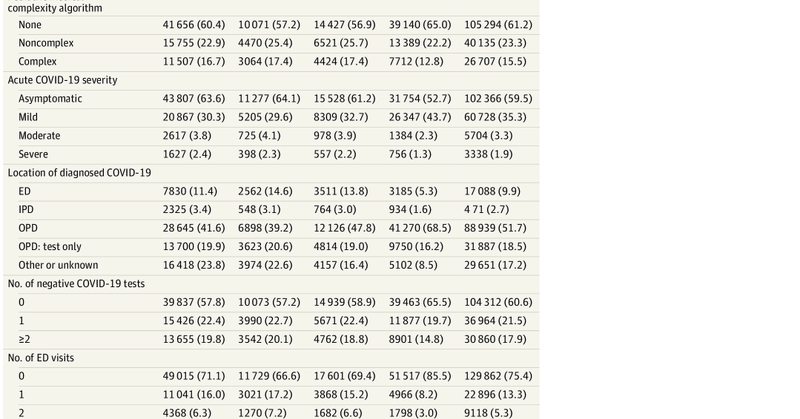
PennCIL
@PennCIL_lab
Followers
81
Following
8
Media
10
Statuses
39
A Computing, Inference, and Learning Lab at Penn School of Medicine Software created by PennCIL: PDA website: https://t.co/MSf9hEdMyM Xmeta website: https://t.co/0CEvjguG3D
Joined November 2019
5/5📊 The R package and Shiny web app include example datasets for easy exploration and demonstration of the tool's capabilities. Feedback and suggestions are welcome—we’d love to hear your thoughts!
0
0
0
4/5 Explore the details and try it out: 📄 Manuscript: https://t.co/iI5MVGbZws 📦 R package: https://t.co/3bXPuL12bK 🌐 Shiny web app: https://t.co/giHU2qMtvo
cran.r-project.org
A visualization tool for multivariate data. This package maintains the original functionality of a radar chart and avoids potential misuse of its connected regions, with newly added features to...
1
0
0
3/5 In the manuscript, we demonstrate its use through an example comparing eight prostaglandin treatments for cervical ripening across five clinical outcomes. The tool supports intuitive decision-making and is accessible to researchers through a simple interface.
1
0
0
2/5 Built as an R package and Shiny web app, OrigamiPlot improves upon traditional radar charts by ensuring the area of the connected region is invariant to axis order, providing consistent and reliable visualizations.
1
0
0
1/5 We’re excited to share our manuscript introducing OrigamiPlot, a new tool for enhancing multivariate data visualization.
1
1
1
6/6 These findings suggest that overweight and obesity are important risk factors for pediatric PASC, highlighting the need for targeted care to prevent chronic conditions in at-risk children and young adults who are infected with SARS-CoV-2.
0
0
0
5/6 compared with peers with a healthy BMI, there was a 25.4% increased risk of PASC among those with obesity or severe obesity had a 25.4%, or and a 42.1% increased incidence risk of PASC among those with severe obesity.
1
0
0
4/6 In this study, we found that elevated BMI were was associated with significantly higher risk of PASC in a dose-dependent manner in this cohort study:
1
0
0
3/6 This retrospective cohort study included 172,136 US children and young adults aged 5 to under 21 and explored the relationship between association of BMI status and with PASC among the pediatric population.
1
0
0
2/6 This is joint work with Senior authors Yong Chen @chenyong1203 and Christopher Forrest. We appreciate all the collaborators and reviewers who made this work in the present form.
1
0
0
1/6 Our new JAMA Network Open, Body Mass Index and Postacute Sequelae of SARS-CoV-2 Infection in Children and Young Adults, is online on October 28, 2024! Read more at: [ https://t.co/CuXVr02GtT]
jamanetwork.com
This cohort study analyzes associations of body mass index (BMI) with development of postacute sequalae of SARS-CoV-2 among children and young adults.
1
0
0
14/n We pre-specified 40 negative control outcomes that are not causally related to the vaccines. By applying the same method to each of these outcomes, we estimated the distribution of the potential residual biases, which was used to adjust our primary results.
1
0
0
13/n In addition to adjusting for a rich set of confounding variables and under-reported vaccination status in our proposed method, we performed negative control experiments to further mitigate potential residual bias.
0
0
0
12/n Our study was the first to rigorously address the under-reporting issue in vaccination status by health systems in the USA.
0
0
0
11/n Thus, the “vaccinated” status in the data was likely to be true, whereas “unvaccinated” status in the data could be truly vaccinated. To address the potential bias from the under-reporting issue, we developed and employed a novel comparative effectiveness research method.
0
0
0
10/n A key issue in EHR data is the under-reported vaccination status that can lead to biased vaccine effectiveness estimates. Children or adolescents could get vaccinated from various places, whereas only some of these places share the vaccination data with the health system.
0
0
0
9/n The variables include vaccination status, COVID-19 outcomes (documented infection, severe illness, and ICU admission), cardiac complications, healthcare utilization (i.e., negative COVID-19 tests), pediatric comorbidity indicator, and preexisting chronic conditions.
0
0
0
8/n The study covered a diverse and representative pediatric population from primary care, specialty care, emergency department (ED), testing center, and inpatient settings. By using electronic health records data from PEDSnet, we defined a rich set of variables for the analysis.
0
0
0
7/n Our study involves large USA pediatric cohorts totaling 250,000 children and adolescents from PEDSnet, a national network of U.S. pediatric health systems.
0
0
0
6/n 📊Key findings: e. During the Delta wave, there was no evidence of significant waning in vaccine’s effectiveness over the subsequent 4 months. f. During the Omicron wave, the data showed some reduction in effectiveness near the end of 4 months following vaccination.
0
0
0


